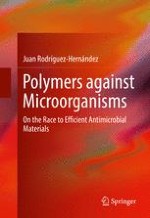2017 | OriginalPaper | Buchkapitel
3. Chemical Approaches to Prepare Antimicrobial Polymers
verfasst von : Juan Rodríguez-Hernández
Erschienen in: Polymers against Microorganisms
Aktivieren Sie unsere intelligente Suche, um passende Fachinhalte oder Patente zu finden.
Wählen Sie Textabschnitte aus um mit Künstlicher Intelligenz passenden Patente zu finden. powered by
Markieren Sie Textabschnitte, um KI-gestützt weitere passende Inhalte zu finden. powered by
